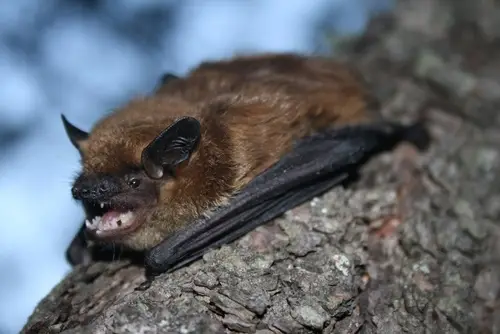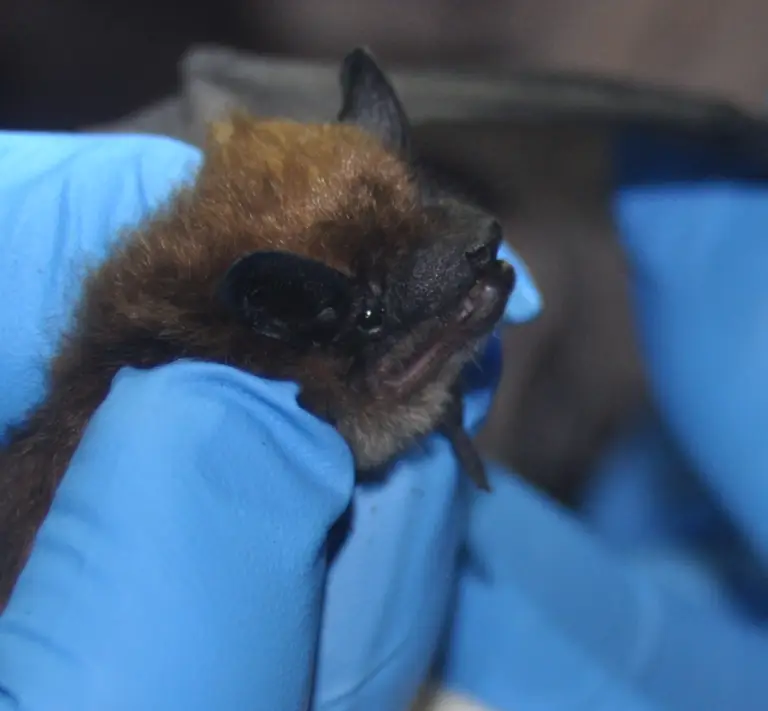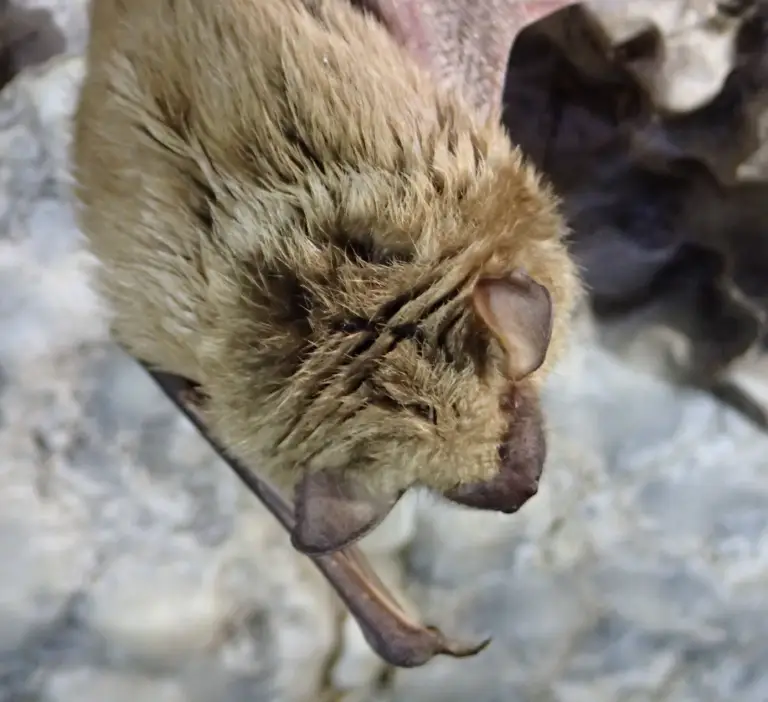Found nearly everywhere across North America, the Big Brown Bat (Eptesicus fuscus) is THE quintessential ‘bat’. They have also provided a framework for scientists to learn much of what we know about bats in general, including echolocation, prey capture, flight mechanics, and physiology. So in honor of this oft-overlooked bat species, here are 3 amazing facts about our common backyard bat:
1. During hibernation, Big Brown Bats slow down their metabolic rate and breathing rate, all to help them conserve energy. Laboratory studies of Big Brown Bats hibernating found that they could go as long as 2 hours without taking a breath!


2. Big Brown Bats are voracious eaters, using their strong jaws to crunch down on beetles and other insects. Many of these insects are also agricultural pests, including corn rootworms and seed corn beetles, which are major pests of corn crops throughout the Midwest. They also consume mosquitoes and other small insects, though it is unclear if they consume enough to have strong effects on mosquito populations.
3. Beyond being pretty adorable, Big Brown Bats are also surprisingly hardy. Compared to other hibernating insectivores like little brown bats and tricolor bats, Big Brown Bats are not severely affected by white-nose syndrome. There is also evidence that Big Brown Bats are resistant to SARS-CoV-2, the virus responsible for the current pandemic.

Literature Cited:
Szewczak, Joseph M., and Donald C. Jackson. “Apneic oxygen uptake in the torpid bat, Eptesicus fuscus.” The Journal of Experimental Biology 173, 1 (1992): 217-227.
Whitby, Michael D., Troy J. Kieran, Travis C. Glenn, and Craig Allen. “Agricultural pests consumed by common bat species in the United States corn belt: The importance of DNA primer choice.” Agriculture, Ecosystems & Environment 303 (2020): 107105.
Hall, Jeffrey S., Susan Knowles, Sean W. Nashold, Hon S. Ip, Ariel E. Leon, Tonie Rocke, Saskia Keller, Mariano Carossino, Udeni Balasuriya, and Erik Hofmeister. “Experimental challenge of a North American bat species, big brown bat (Eptesicus fuscus), with SARS‐CoV‐2.” Transboundary and Emerging Diseases (2020).